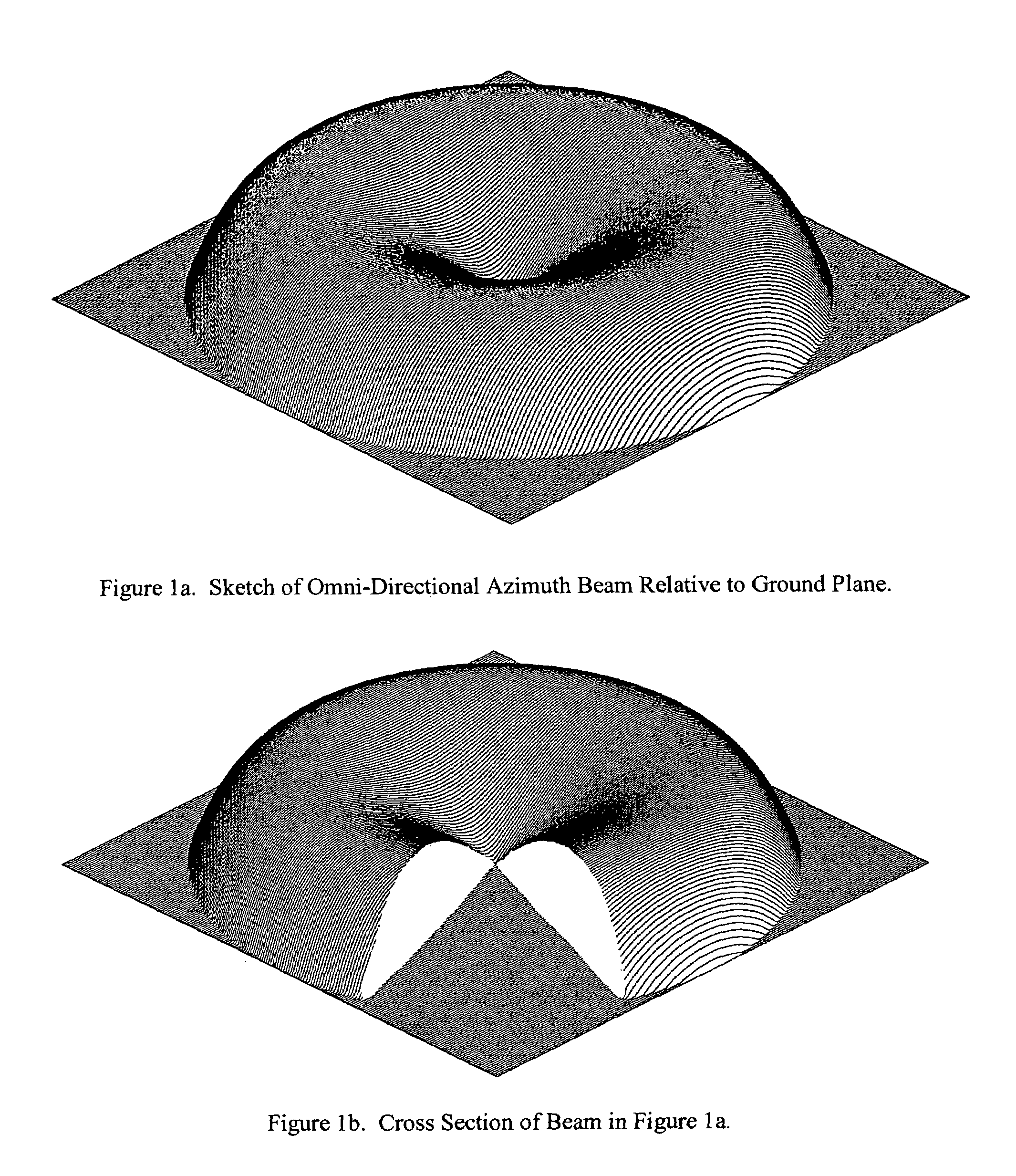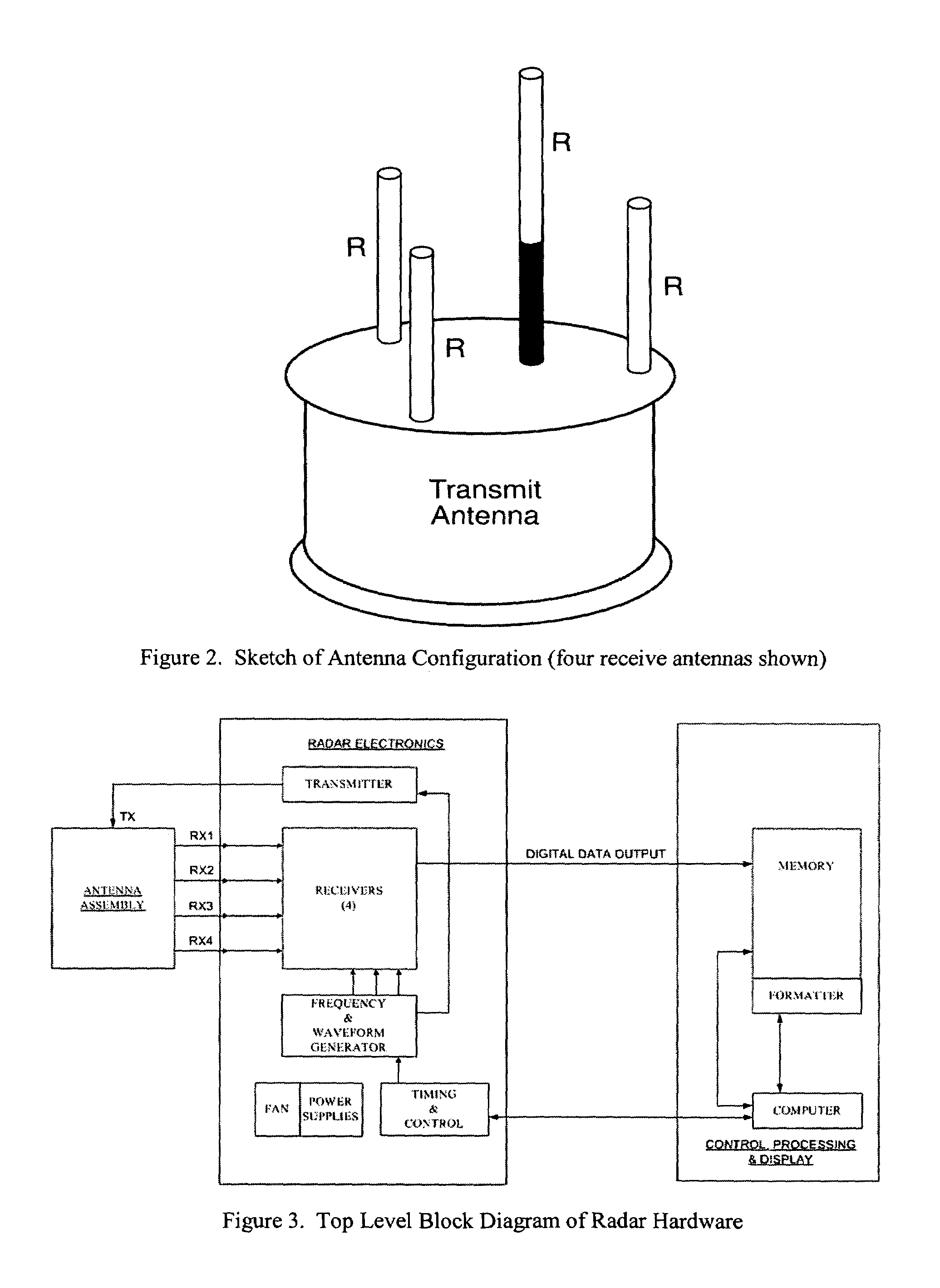Non-scanning radar for detecting and tracking targets
a radar and target technology, applied in direction finders, instruments, measurement devices, etc., can solve the problems of long dwell time on targets, expensive systems based on phased array antennas, and systems no longer suitable for modern warfar
- Summary
- Abstract
- Description
- Claims
- Application Information
AI Technical Summary
Problems solved by technology
Method used
Image
Examples
Embodiment Construction
[0018]The preferred embodiments of the present invention are based on replacing the traditional narrow antenna beam with one that illuminates the entire surveillance sector continuously, eliminating the scan entirely. The antenna is thus simple and inexpensive. The need for angle measurements is met with a simple interferometer, utilizing multiple antennas on receive, and the loss in antenna gain is offset by a much longer processing time for detection purposes (hereinafter called long dwell time or long-term processing, namely long in comparison to that used in a conventional surveillance radar). Although this long-term signal processing is much more intensive than that required for the traditional approach, it is nevertheless practical in the present modern computer age. In effect, the system expense is transferred from the antenna to the signal processor. In this regard, it is the software that is initially expensive, not the digital hardware, but the former is a non-recurring ex...
PUM
 Login to View More
Login to View More Abstract
Description
Claims
Application Information
 Login to View More
Login to View More - R&D
- Intellectual Property
- Life Sciences
- Materials
- Tech Scout
- Unparalleled Data Quality
- Higher Quality Content
- 60% Fewer Hallucinations
Browse by: Latest US Patents, China's latest patents, Technical Efficacy Thesaurus, Application Domain, Technology Topic, Popular Technical Reports.
© 2025 PatSnap. All rights reserved.Legal|Privacy policy|Modern Slavery Act Transparency Statement|Sitemap|About US| Contact US: help@patsnap.com



